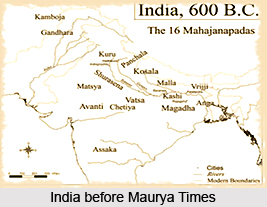 Nirgrantha was not considered as a religious movement of any importance in the Nanda-Maurya period. As per the Buddhist texts, Mahavira was the founder of the Nigrantha movement. The name of the order refers to those who have destroyed the worldly ties as well as have given up their clothes. They were pravrajita or the houseless ascetics as well as the naked ascetics. These ascetics abstain from animal food and all food cooked by fire. They live on fruits picked up when they had dropped to the ground. These points of their doctrines are similar to the doctrines ascribed to the Nigranthas in the Buddhist texts. They believed in soul`s existence and abstained from killing animals and destroying plants. Megasthenes calls them Brahmin probably because of purity of conduct and religious beliefs.
Nirgrantha was not considered as a religious movement of any importance in the Nanda-Maurya period. As per the Buddhist texts, Mahavira was the founder of the Nigrantha movement. The name of the order refers to those who have destroyed the worldly ties as well as have given up their clothes. They were pravrajita or the houseless ascetics as well as the naked ascetics. These ascetics abstain from animal food and all food cooked by fire. They live on fruits picked up when they had dropped to the ground. These points of their doctrines are similar to the doctrines ascribed to the Nigranthas in the Buddhist texts. They believed in soul`s existence and abstained from killing animals and destroying plants. Megasthenes calls them Brahmin probably because of purity of conduct and religious beliefs.
Nirganthas have not been referred as such except in the Buddhist texts. In the seventh pillar edict, Nirganthas have been mentioned along with the Ajivikas and the Buddhists.
In the jain texts Nirgrantha community was confined in the 4th century B. C. to Magadha and the heads of the church were in chronological order Sayambhava, Yasobhadra, Sambhutivijaya and Bhadrabahu. Bhadrabahu also converted Chandragupta Maurya to the Nirgrantha religion. Samprati, the grandson and successor of Ashoka converted to the Nirgrantha faith and tried to imitate his grandfather as far as propagation of the faith which he professed is concerned.
This article is a stub. You can enrich by adding more information to it. Send your Write Up to content@indianetzone.com



















